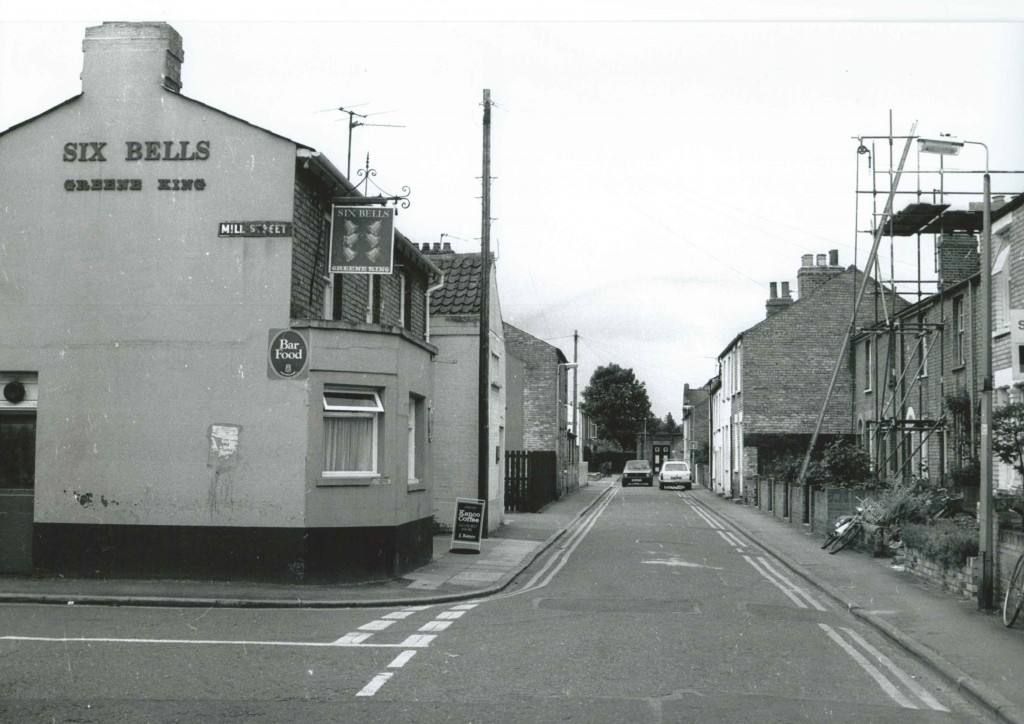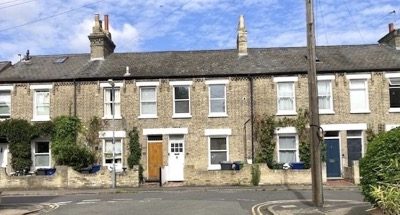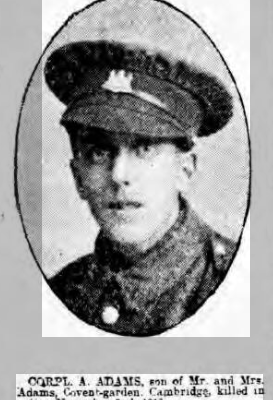Search by topic
- archaeology
- architecture
- bricklayer
- Building of Local Interest
- carpenter
- church
- crime
- dressmaker
- fire
- Great Eastern Railway
- listed building
- medieval
- oral history
- Public House
- Rattee & Kett
- Religious House
- Roman
- scholar
- school
- Then and Now
- tudor
- women
- work
- world war one
- world war two
Search by text

Covent Garden History
If we could go back to the 1840s and walk to the far end of the road we would find a stark contrast.
Watch Ian Bent relate the history of Covent Garden
Covent Garden in 1841
On the one hand a big old house in a spacious garden with green houses and out buildings, bearing the name ‘Buckhardt House’; on the other hand, a cluster of tiny cottages where the Drama Studio now stands.
The owners of the large house were probably Charles and John Buckhardt Sippel, members of the wealthy Sippel family whose main residence was on King’s Parade. By contrast, two of the cottages were rented by James Cave, 30 year old cow keeper and carter, with his wife Anne and daughter Eliza, and Robert Norman, aged 43, maltster, with his wife Elizabeth and son Benjamin. We can only imagine the humble conditions in which they lived!
The occupations of the heads of household in the street in 1841 were largely agricultural: a farmer, labourers, a carter, a gardener, a groom and a blacksmith. Then there were tradesmen: carpenters, sawyers, tailors, a shoemaker, two publicans, a maltster and a brewer. Others were a postman and a college servant. The women whose occupations are known were maidservants and a dressmaker.
Covent Garden was a dark place at night! In 1843, the residents appealed to the Borough Council for street lighting, and three years later, after much debate and penny pinching, the Gas Company was instructed to lay a gas main and erect four gas lamps.
1970s
In 2024 Deborah Smith sent us her reminiscences of living in Cambridge as a student nurse. She lived for a time in Covent Garden. She also remembered visiting the Gwydir Street bath house.
For a few years I lived in Covent Garden, off Mill Rd. We called it Slum Row. I loved it although I wasn’t so keen on the mould or the mice footprints in the fat left in the frying pan. But we were warm and had a fridge (gas!) and ancient cooker and bathroom and immersion heater and launderette nearby, and a garden backing on to Fenners and Hughes Hall where we could hang our washing out to dry. Mill Rd wasn’t achingly trendy then. There were butchers and grocers and greengrocers and hardware shops – and Arjuna of course. (Still there I believe). Andy’s Records, Brown’s Bookshop, Barney’s, Tigerlily, the Library. All gone.
Contribute
Do you have any information about the people or places in this article? If so, then please let us know using the Contact page or by emailing capturingcambridge@
License
This work is licensed under CC BY-NC-SA 4.0












